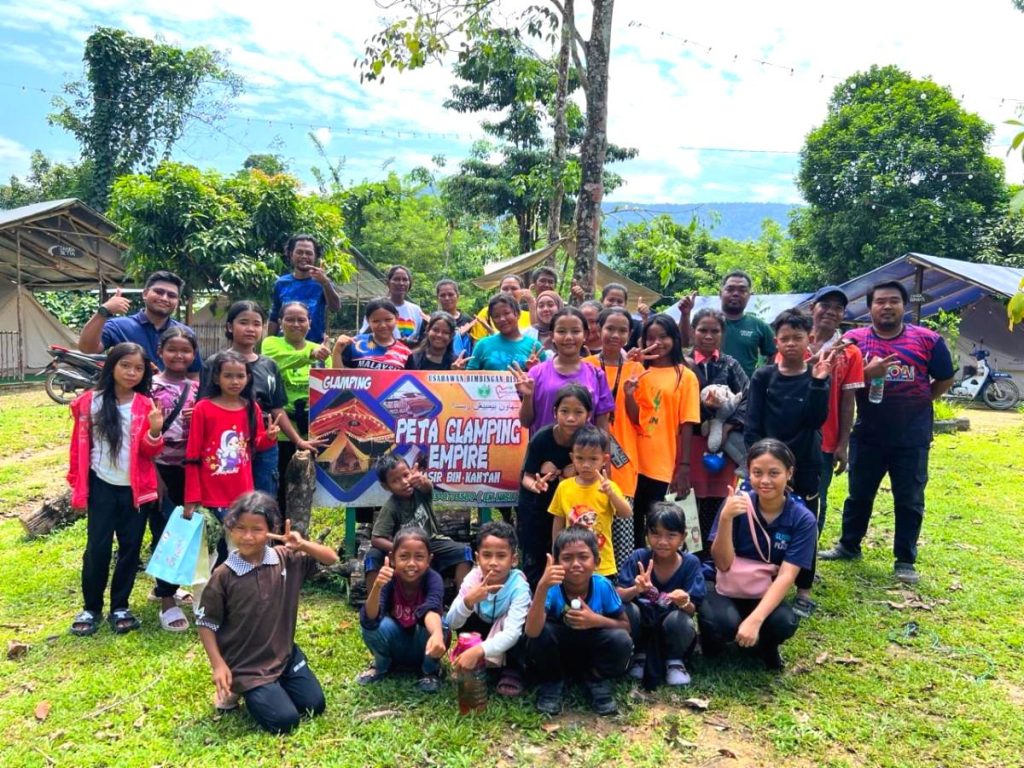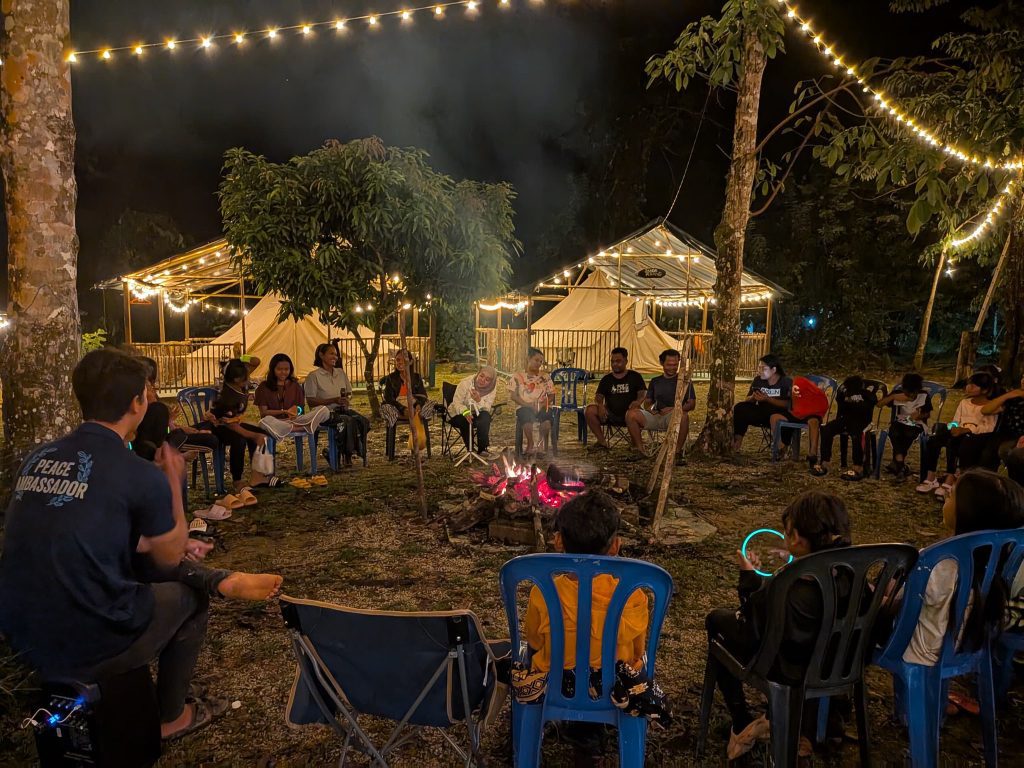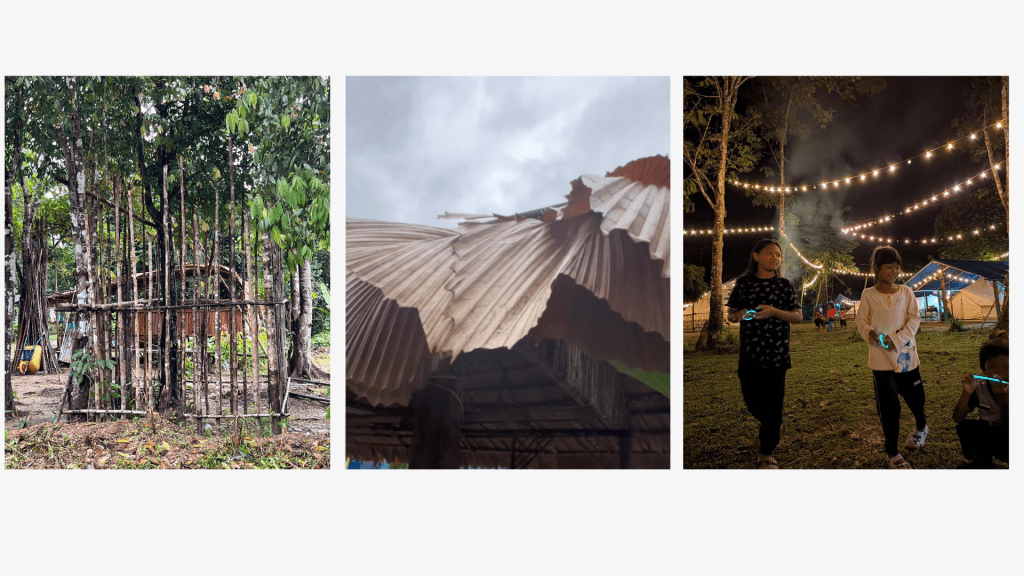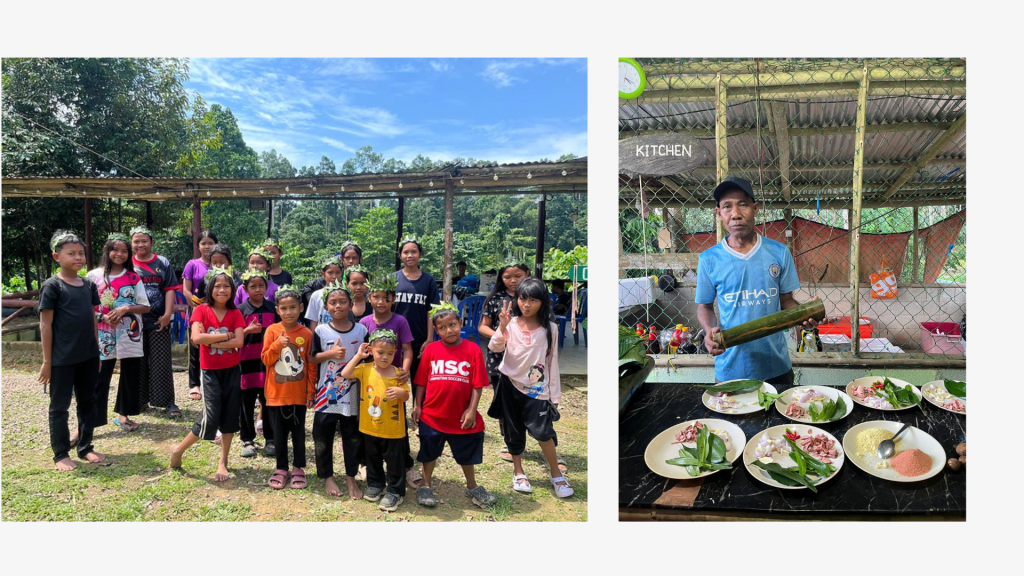This year’s Mobile School excursion took us away from concrete buildings and electronic screens and into a setting where heritage, and community were the teachers.
Instead of visiting museums or city landmarks, we travelled by four-wheel drive into Kampung Peta, the entrance to Taman Negara Endau-Rompin Johor, one of Malaysia’s most significant conservation areas. Over three days and two nights, students and parents were immersed in the life of the Jakun community, learning not only through observation but through shared experience.

At the heart of this trip were real connections between students, parents, nature, and the wider Jakun Orang Asli community.
Watch the video to experience our 3 days and 2 night excursion recap
Intra-cultural exchange, Jakun meets Jakun
Students from Jakun villages in Pahang were welcomed by Jakun families in Johor. They share ancestry, yet their meeting revealed differences shaped by place and time.

Around the fire, Mamak Nasir and Mamak Luke told stories once spoken under the night sky before mobile phones became common. Their words gave students a glimpse of how history and memory were once kept alive in voice and song.
Wild Learning in the forest
Guided by Kak Shima, our students explored forest trails and traditional spaces from the balai adat (community hall) to homes with roofs made from daun payung (fan palm leaves). Along the way, we saw signs of elephant activity and even a prototype of a tiger snare. An immersive learning about the forest and the delicate balance between human and wildlife life.
We wrapped up the day with a night explorace that tested the students’ observation and memory. “What leaf was used for the rooftop we saw earlier?” asked one clue. The students remembered.

The 3C – Culture, Craft, and Cuisine
Back at the glamping site, we dove into the art of weaving “tempok,” a tradition passed from elders to youth, carrying with it meaning, pride, and heritage.
We also learned to prepare traditional bamboo-cooked dishes using ingredients like bawang merah, bawang putih, daun kesang, chilies, and the treasured buah kulim often referred to as the “wild garlic” of Southeast Asia, long used for its medicinal benefits.
That evening, students, parents, and even teachers came together for heartfelt performances, a celebration of the connections made through culture and community

Snare making and survival knowledge
On our final day, students were introduced to traditional snare making a skill once essential for survival. They tried two types, jerat kecil, used for small animals like kancil, and jerat libas, used for larger wildlife such as kijang and babi hutan.
These skills, while no longer part of daily life, remain a crucial part of cultural knowledge. Learning them helps preserve and honor the traditions of the Orang Asli community.
We concluded the journey with a visit to the Taman Negara Endau-Rompin education center, further exploring the region’s flora, fauna, and natural history.
A journey rooted in culture and community
This excursion was not only a school activity. It was a reminder that learning exists in many forms. It can be found on forest paths, in meals prepared together, in the words of elders, and in the skills passed quietly from one generation to the next.
The students returned with knowledge and with pride, carrying a deeper sense of belonging to their people and to the land. Sometimes the most enduring lessons are learned by walking in the footsteps of those who came before.






